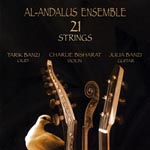This review page is supported in part by the sponsors whose ad banners are displayed below |
 |
 |
To judge the H100's potential SoundEngine™ 'class A sonics', I compared it to my FirstWatt F5 via its bypass inputs. This ran both amps—sitting idle for an hour first to reach thermal stabilization—off the same Esoteric C-03 preamplifier.
First though, a few comments on internal vs. external sound cards. Enter a MacBook Pro leashed up via separately grounded Entreq USB link (external DAC), then a Zu Audio mini-to-stereo link off its headphone port (internal DAC). Suffice to say that the Hegel took a far bigger chunk out of the famous apple than the logo shows. When a man is down, you don't keep hitting him. Apple's man went down right away, stayed down looking pale and wan and wasn't missed for one moment. KO.
Kevin Halverson's High Definition Technologies $299 Streamer+ meanwhile is a self-powered USB DAC with upscale ambitions. It incorporates some unique solutions "not found elsewhere" as the designer behind Muse Electronics and HDT put it to me without becoming more specific - competitive advantage and such.
|
|
|
|
|
 |
A recent very high-level music discovery on both artistic and sonic grounds is 21 Strings by the Al-Andalus Ensemble. Tarik Banzi's oud and Charlie Bisharat's violin trade Moorish riffs while Julia Banzi provides accompaniment on Flamenco guitar. The mix of string timbres and attack modalities—plucked and con arco—makes for interesting contrasts, the quality of tone is rich and deeply burnished and the recorded ambiance thickly palpable. Not terribly much of these gourmet flavors had survived the MacBook's own sound card beyond the notes proper. It became a quite different subject moving converterage offboard. My usual Esoteric UX-1 | Yamamoto YDA-01 2-box duo provided the Redbook laser reference to keep streaming audio honest.
|
|
|
|
| While anticipation could have predicted otherwise—the absence of a dedicated power supply might have seemed disadvantageous—the Streamer+ took the streaming lead by sounding more robust, richer and overtly more dynamic than Hegel's sound card. Where the latter perhaps appeared to be more transparent by being leaner and hence suggestive of higher resolution, the HRT box remained truer to the tone saturation and image density I knew from my reference gear. While admittedly also somewhat coarser than the Esoteric/Yamamoto combo—the latter managed the Streamer's density and dynamics with the Hegel's see-throughness—I thought the Hegel was bested on this and other tracks by the American upstart. While clearly superior to the MacBook Pro's own audio card to be a no-brainer feature for an instant plug'n'play upgrade (upon connection, the Mac automatically recognized the Streamer and set it as the new default), Hegel's onboard solution can ultimately be upgraded itself for not too much money (unless the Streamer+ was the rare exception and equivalent USB DACs otherwise cost rather more - at this juncture, I hadn't yet commenced the Streamer's own feature review).
|
|
|
 |
FirstWatt | Hegel: This comparison turned out to be more evenly matched than class A|AB caste belief might have predicted to lend credence to Hegel's SoundEngine™ claims. The biggest differentiators were two related qualities in favor of the Nelson Pass circuit. It created more visibility at stage end to perceive the "recorded rear wall"—in certain cases actual, in others a euphemism for recorded ambiance of the doctored kind— and it was more lit up to sound a bit livelier and energetic particularly on vocals. The heightened ambient factor underscored an impression of greater stage depth. This wasn't factual in terms of perceived distance of individual performers—they were no closer to the seat over the Hegel—but persistent as a subjective illusion caused by how the FirstWatt retrieved more 'spiderwebby' stuff around and behind the stage actors.
In terms of tone, dynamics and relative fleshiness, the amps seemed surprised equals. In terms of ultimate separation on massed symphonic works like Bruckner's 9th, the Pass amp had an edge, albeit only a small one. On balance, these amps were rather more alike than not. By running noticeably cooler than the Pass though not thermally inactive itself, the Hegel should make friends in hot climates and the kind of smaller rooms that react sweatier to additional heat sources.
|
|
|
Stello | Hegel: April Music's new Ai500 is a sub €3K 150/300wpc into 8/4-ohm direct-coupled class A/B integrated with more luxurious cosmetics, fancier sockets and a brighter far more legible display with various dim options. On the connectivity front, these machines were closely matched, both providing an XLR input, a pre-out (the Hegel doubles up the latter) while the Stello upstaged the Hegel's USB port with additional Toslink and RCA S/PDIF sockets and separate iPod dock links. Both offer the HT bypass as a non-configurable separate fixed input.
 |
Sonically, the Stello had noticeably more bass amplitude and slammage. This translated in general as more warmth, robustness and grander experiential—rather than soundstage—scale. Its grippier handling of transients made the Hegel sound a tad softer and lighter by comparison, the Korean twitchier.
This held true even for minimalist fare à la Nik Bärtsch's Ronin [Holon, ECM 2049] which arguably lives much on the kickiness of bass drum and e-bass accents. Those cross the piano beats to upset the repetitiveness with subtle grooviness. The deeply embedded syncopations must jump out with real heft to cross the subliminal threshold. Here the Ai500's presentation was kinkier. It emphasized the rhythmic cross currents which make this Reichian music interesting in the lively shiftiness of its undercurrents. The Hegel was cooler of demeanor. Even its casing was compared to the Stello's. The latter seems to run higher bias to perhaps operate in class A for a handful of watts. |
|
 |
As direct competitors on concept and price alike, this juxtaposition found the Korean even more full-featured and luxo (think little details like engraved rather than silk-screened logo on fascia and remote, superior connectors) while sonically, both machines played on equal grounds. The Stello's greater foundation voicing could perhaps be called more American in character while the Hegel's non-sterile clarity mates well with general notions on Scandinavian design - simple and non-frilly, pure and direct. Put differently, the Esoteric C-03 preamp set to 12dB gain on the Hegel could nearly offset the voicing gap if the Stello's feed had the C-03 at zero gain. (For those unfamiliar with our review of the latter, the C-03's adaptive gain feature—0, 12 and 24dB—acts like an analog signal processor to shift the relative balance between transient speed, density and bass mass. Higher circuit gain increases density but also softens attacks.) |
|
 |
|